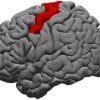Summary: Tau accumulations disrupt wake-promoting neurons. The findings help explain why day-time napping and sleep disruptions are often reported in Alzheimer’s patients.
Source: UCSF
Researchers and caregivers have noted that excessive daytime napping can develop long before the memory problems associated with Alzheimer’s disease begin to unfold. Prior studies have considered this excessive daytime napping to be compensation for poor nighttime sleep caused by Alzheimer’s-related disruptions in sleep-promoting brain regions, while others have argued that the sleep problems themselves contribute to the progression of the disease. But now UC San Francisco scientists have provided a striking new biological explanation for this phenomenon, showing instead that Alzheimer’s disease directly attacks brain regions responsible for wakefulness during the day.
The new research demonstrates that these brain regions (including the part of the brain impacted by narcolepsy) are among the first casualties of neurodegeneration in Alzheimer’s disease, and therefore that excessive daytime napping — particularly when it occurs in the absence of significant nighttime sleep problems — could serve as an early warning sign of the disease. In addition, by associating this damage with a protein known as tau, the study adds to evidence that tau contributes more directly to the brain degeneration that drives Alzheimer’s symptoms than the more extensively studied amyloid protein.
“Our work shows definitive evidence that the brain areas promoting wakefulness degenerate due to accumulation of tau — not amyloid protein — from the very earliest stages of the disease,” said study senior author Lea T. Grinberg, MD, PhD, an associate professor of neurology and pathology at the UCSF Memory and Aging Center and a member of the Global Brain Health Institute and UCSF Weill Institute for Neurosciences.
Wakefulness Centers Degenerate in Alzheimer’s Brains
In the new study, published August 12, 2019 in Alzheimer’s and Dementia, lead author Jun Oh, a Grinberg lab research associate, and colleagues precisely measured Alzheimer’s pathology, tau protein levels and neuron numbers in three brain regions involved in promoting wakefuless from 13 deceased Alzheimer’s patients and seven healthy control subjects, which were obtained from the UCSF Neurodegenerative Disease Brain Bank.
Compared to healthy brains, Oh and colleagues found that the brains of Alzheimer’s patients had significant tau buildup in all three wakefulness-promoting brain centers they studied — the locus coeruleus (LC), lateral hypothalamic area (LHA), and tuberomammillary nucleus (TMN) — and that these regions had lost as many as 75 percent of their neurons.
“It’s remarkable because it’s not just a single brain nucleus that’s degenerating, but the whole wakefulness-promoting network,” Oh said.
“Crucially this means that the brain has no way to compensate because all of these functionally related cell types are being destroyed at the same time.”
Oh and colleagues also studied brain samples from seven patients with progressive supranuclear palsy (PSP) and corticobasal disease (CBD), two distinct forms of neurodegenerative dementia caused by tau accumulation. In contrast to the Alzheimer’s disease brains, wakefulness-promoting neurons appeared to be spared in the PSP and CBD brains, despite comparable levels of tau buildup in these tissue samples.
“It seems that the wakefulness-promoting network is particularly vulnerable in Alzheimer’s disease,” Oh said. “Understanding why this is the case is something we need to follow up in future research.”
Studies point to role of tau protein in Alzheimer’s symptoms
The new results are in line with an earlier study by Grinberg’s group which showed that people who died with elevated levels of tau protein in their brainstem — corresponding to the earliest stages of Alzheimer’s disease — had already begun to experience changes in mood, such as anxiety and depression, as well as increased sleep disturbances.

“Our new evidence for tau-linked degeneration of the brain’s wakefulness centers provides a compelling neurobiological explanation for those findings,” Grinberg said. “It suggests we need to be much more focused on understanding the early stages of tau accumulation in these brain areas in our ongoing search for Alzheimer’s treatments.”
These studies add to a growing recognition among some researchers that tau buildup is more closely linked to the actual symptoms of Alzheimer’s than the more widely studied amyloid protein, which has so far failed to yield effective Alzheimer’s therapies.
For instance, another recent study by the Grinberg lab measured tau buildup in the brains of patients who died with different clinical manifestations of Alzheimer’s disease, including variants that involved language impairment or visual problems instead of more typical memory loss. They found that differences in local tau burden in these patients’ brains closely matched their symptoms: patients with language impairments had more tau accumulation in language related brain areas than in memory regions, while patients with visual problems had higher tau levels in visual brain areas.
“This research adds to a growing body of work showing that tau burden is likely a direct driver of cognitive decline,” Grinberg said.
Increased focus on the role of tau in Alzheimer’s suggests that treatments currently in development at UCSF’s Memory and Aging Center and elsewhere that directly tackle tau pathology have the potential to improve sleep and other early symptoms of Alzheimer’s disease, in addition to holding a key to slowing the progress of the disease overall, the authors say.
Funding: This study was supported by the Tau Consortium/Rainwater Charity Foundation and grants from the National Institutes of Health (R01AG064314, R01AG060477, P50AG023501, P01AG019724, K24AG053435), the Global Brain Health Institute, and the São Paulo Research Foundation (FAPESP).
About this neuroscience research article
Source:
UCSF
Media Contacts:
Nicholas Weiler – UCSF
Image Source:
The image is in the public domain.
Original Research: Closed access
“Profound degeneration of wake-promoting neurons in Alzheimer’s disease”. Lea T. Grinberg et al.
Alzheimer’s and Dementia. doi:10.1016/j.jalz.2019.06.3916
Abstract
Profound degeneration of wake-promoting neurons in Alzheimer’s disease
Introduction
Sleep-wake disturbances are a common and early feature in Alzheimer’s disease (AD). The impact of early tau pathology in wake-promoting neurons (WPNs) remains unclear.
Methods
We performed stereology in postmortem brains from AD individuals and healthy controls to identify quantitative differences in morphological metrics in WPNs. Progressive supranuclear palsy (PSP) and corticobasal degeneration were included as disease-specific controls.
Results
The three nuclei studied accumulate considerable amounts of tau inclusions and showed a decrease in neurotransmitter-synthetizing neurons in AD, PSP, and corticobasal degeneration. However, substantial neuronal loss was exclusively found in AD.
Discussion
WPNs are extremely vulnerable to AD but not to 4 repeat tauopathies. Considering that WPNs are involved early in AD, such degeneration should be included in the models explaining sleep-wake disturbances in AD and considered when designing a clinical intervention. Sparing of WPNs in PSP, a condition featuring hyperinsomnia, suggest that interventions to suppress the arousal system may benefit patients with PSP.
Feel free to share this Neurology News.
Source: neurosciencenews.com






